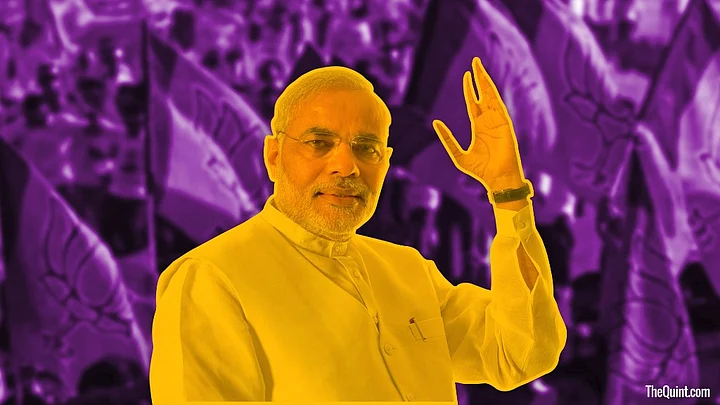The reception was hostile and contemptuous looks all too visible on their faces. Without knowing who we were and what was our line of inquiry, a group of people, playing cards on a hot and sunny afternoon in a village in Uttar Pradesh’s Moradabad district, dismissed us by saying: “Ye sab beeke huwe hain. Inse baat karne ka koi fayada nahin hai” (They all are very partisan and there is no point talking to them).
Our only fault, perhaps, was that we were relatively better dressed, and had the luxury of moving around in a car. This happened even before we introduced ourselves as journalists (not that it would have mattered), trying to make sense of the then Uttar Pradesh government’s land acquisition programme for the Agra-Lucknow expressway.
However, after an extended session of persuasion, we finally managed to talk to them. When inquired about their initial response, all they said was that they were fed up of dalals (brokers). The category, they said, pretty much included everyone – government servants, contractors, land dealers, politicians, and journalists.
In other words, they wanted that the entire group of, what social scientist C Wright Mills calls the ‘Power Elite’, stayed away from their lives.
Aversion to What The Erstwhile Power Elite Represented
The hostility towards the traditional power elite is not confined to a region or a community. The aversion is widespread and venomous. Twitter trolling bordering on savagery, mob lynching on rumours, and complete inversion of hitherto accepted discourse on Kashmir, Pakistan or secularism, to name just three of the many issues, are manifestations of that.
The backlash is so strong that someone, for example, saying that “we need to be sensitive to the fundamental rights of Kashmiris as well”, is made to feel like he has made some blasphemous statement.
Statements like “peaceful relations with neighbours, including Pakistan, should be maintained” are ridiculed. People approvingly talking about Nehruvian secularism are insulted and made fun of.
For every established narrative, there is a counter-narrative, and the latter is gradually becoming the new normal.
If the narrative is gau rakshaks should not take law in their hands, the counter-narrative is something like this: Members of a particular community have done excesses in the past, and they have been ignored in the name of secularism. But not anymore.
If the narrative is that tribal rights have been ignored and naxalism is a result of that, the counter narrative reads: Naxals and their sympathisers are anti-nationals and they deserve to be crushed.
If the narrative is tolerance, that is required to maintain unity in the midst of diversity (once again a slogan from the Nehruvian era), the counter-narrative is that a strong national character can only be built when we think and speak in one voice.
If the narrative is democracy that entails a painful exercise of consensus building, the counter-narrative is that we need strong leadership to grow, the way Singapore and South Korea have done in the past. The list is endless.
Contra-culture Has Its Genesis in Cities Outside of Metros
The rise of this form of contra-culture with an attitude – “I don’t give a damn”– has been fuelled by three related factors – growing heft of small towns and cities in the overall scheme of things, vernacularisation of the press, and the emergence of social media as one of the primary sources of information.
From online retailers to FMCG companies, from real estate biggies to asset management companies – most of them have been making serious money in small towns and cities. Home to nearly 100 million consumers, about 20 percent of the country’s population lives in cities outside of metros. They have the financial muscle and they want their place under the sun.
Lending loud support to counter-narrative is one of the ways for them to register their presence, very much like Circuit in Munnabhai MBBS, who says “notice hona hai to kuch alag karna hoga”.
Views and opinions thus formed have been percolating down all too quickly to rural areas, thanks to the growing reach of the social media.
Modi, The Outsider, Appeals to Them
The image of Prime Minister Narendra Modi as the quintessential outsider in Delhi’s power corridors has empowered them. The PM’s unconventional moves – forever in the election campaign mode, going public with the news of surgical strikes inside Pakistan’s territory, using the blunt instrument of demonetisation to widen the tax net, and the proposed visit to Israel being just few of them – are seen as vindication of what the proponents of contra-culture want to be: A serious challenger to the status quo.
In that sense, there is a symbiotic relationship between the growing popularity of the Prime Minister and the rising assertion of contra-culture.
Problem with contra-culture though, is that it is quite noisy, becomes abusive and dismissive many a times, and is reactionary. It constantly needs a significant other to bash up and react to. Now that the significant other has been tamed and silenced, how will it sustain itself?
